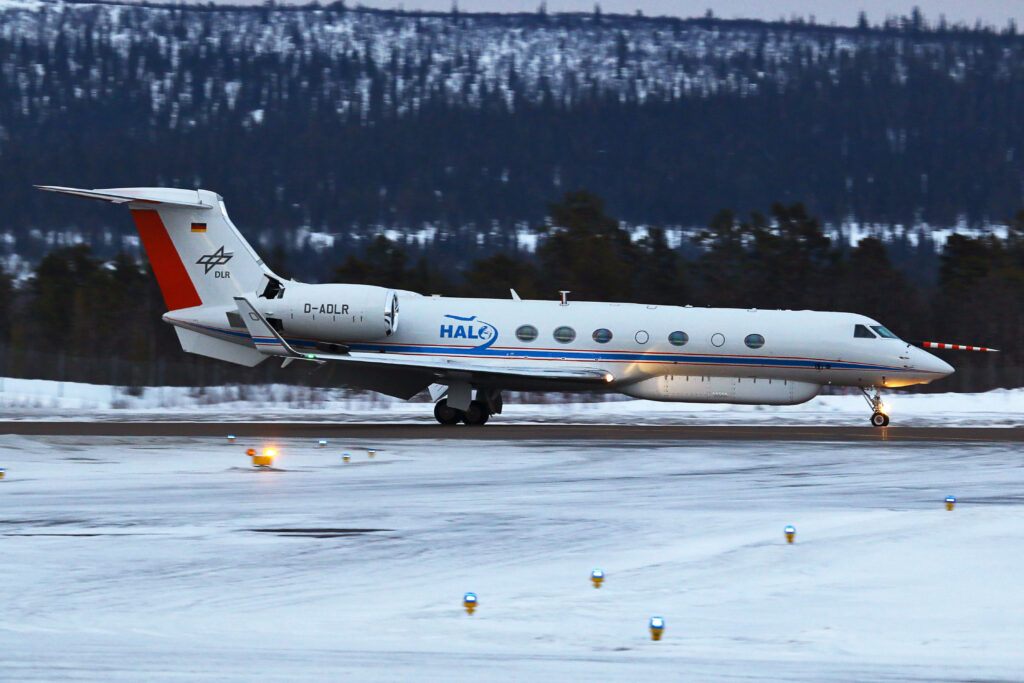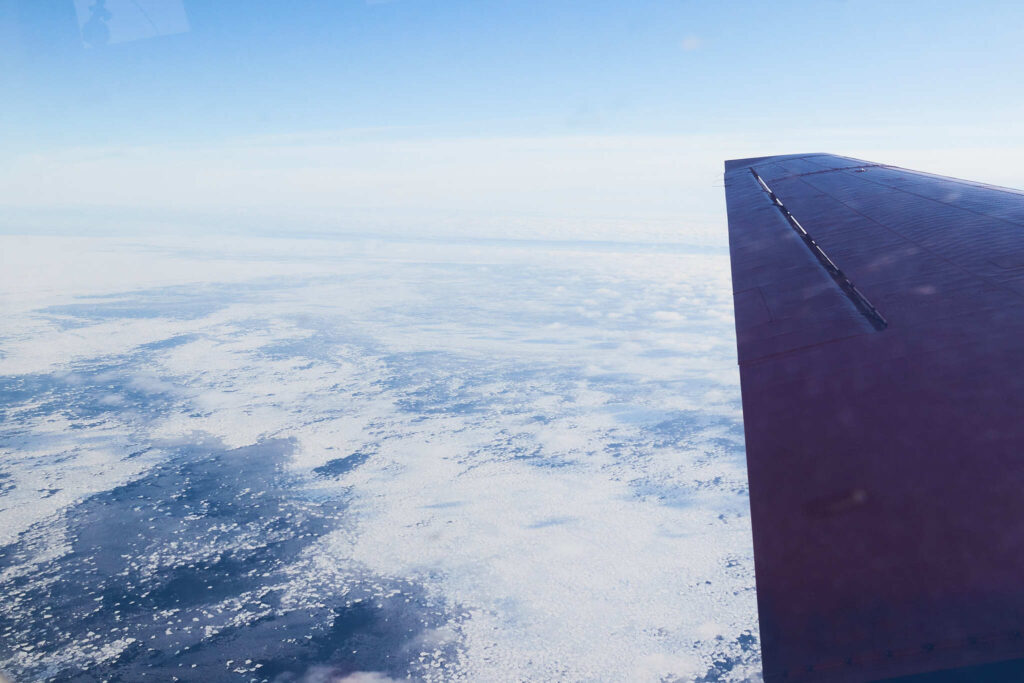What a successful day! P5, P6 and HALO had their first joint research flight on Sunday!
If you ask yourself “What is HALO? And what is special about a joint flight?” then read on…
First, let’s start with something you already know from the previous posts: P5 and P6 are polar aircraft, which participate in the HALO-(AC)³ campaign and which are stationed in Longyearbyen, Spitsbergen. The instruments belonging to the University of Cologne, namely the radar MiRAC and the microwave radiometer HATPRO, are installed on P5, which is a remote sensing aircraft. Contrary, P6 is equipped with in-situ instruments recording atmospheric parameters and cloud particles near the aircraft. Thus, P5 is mainly flying above the clouds at an altitude of around 3 km, whereas P6 is flying at lower altitudes directly through the clouds. Joint flight activities of the two polar aircraft provide in-situ and remote sensing observations of a lot of different parameters from the same cloud at the same time!

Next, HALO comes into play. HALO stands for “High Altitude and Long Range Research Aircraft” and is operated by the German Aerospace Center (DLR). HALO carries remote sensing instruments similar to P5, but is able to fly at higher altitudes of about 10 km and travel much longer distances. During HALO-(AC)³ it is stationed in Kiruna, the northernmost city of Sweden, together with other scientists from our group. The aim is to observe how air masses change in the Arctic by measuring the temperature, humidity, cloudiness or aerosol concentration along the wind direction.
As often as possible, joint flights with all three aircraft will be realized, which is really difficult to coordinate! Another difficulty are the bad weather conditions in Longyearbyen making flights with the polar aircraft impossible. And sometimes the different platforms are interested in different clouds or air masses.
During the first joint flight, the flight conditions were very calm! Our instruments worked well and observed precipitating cloud structures over sea ice and open water. In one of the following posts we will have a first look at the observations!

If you are interested in a video diary with short daily updates on the work routine in Longyearbyen, just follow AWIexpedition on Instagram!
#AC3 #funding #ArcticAmplification (AC)3 AISAM Arctic Atacama Atmospheric boundary layer AWI Bremenhaven AWIPEV AWIPEW CFMIP-GASS climate cloud radar cloud radars clouds COMPEX-EC COST EarthCARE GEWEX HALO HALO-(AC)³ HAMAG HATPRO hyperarid ITCZ JOYRAD94 Kölnische Rundschau Maria S. Merian MiRAC-A model intercomparison Ny-Ålesund outreach Polar 5 Polar 6 PolarStern Precipitation PROBE COST Action radiosondes STEM STEMM Svalbard tropical convection Water Vapor Wetoo Winter school women in science
